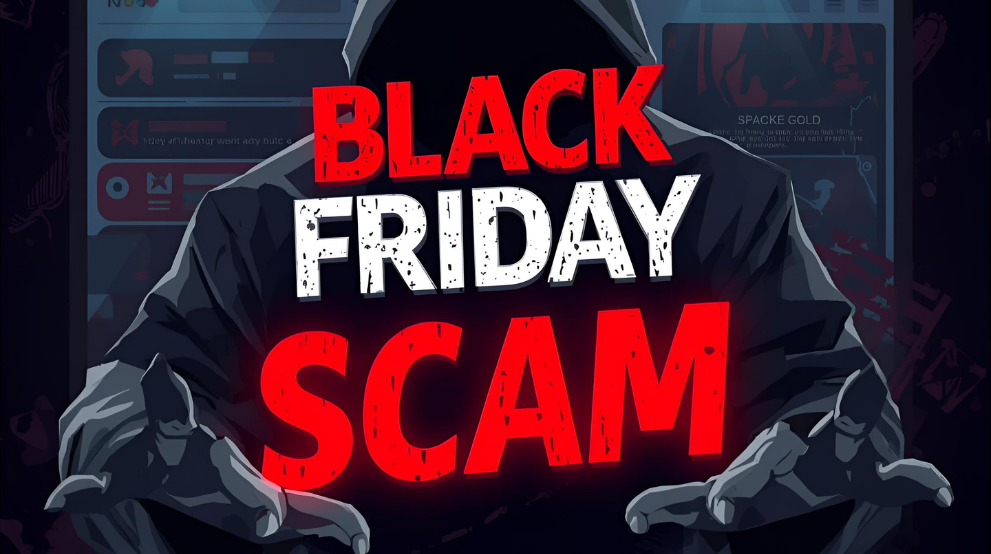Black Friday 2025 will bring jaw-dropping offers, early bird alerts, and carts that fill up in seconds. That rush can also lower your guard. Each year, fraudsters ride the hype with fresh tricks that look real at a glance and cost the moment you click.
A little awareness goes a long way. In this guide, you will see how the most common Black Friday scams work, how to spot them in time, and how to shop safely with simple habits and the right protection on your devices.
1. Fake E-commerce Websites
Scammers spin up shopping sites that copy the look and feel of popular stores. The aim is to steal money or card data and vanish.
Identify:
- Web address has extra letters or odd spelling, or uses strange domain endings.
- Poor design, broken pages, or missing “About,” “Returns,” and “Contact” details.
- No HTTPS lock icon near the address bar, or a certificate that looks invalid.
Overcome (do this):
- Type the store’s domain yourself or use a saved bookmark.
- Check the domain age with a WHOIS lookup. A new site during sale week is a red flag.
- Read the return policy and customer service details before you buy.
- When in doubt, purchase from trusted marketplaces or official brand sites.
2. Phishing Emails and SMS Offers
Fraudsters push “exclusive Black Friday coupon” links through email and SMS. The link leads to a fake login page or malware.
Identify:
- Generic hello instead of your name, spelling mistakes, and odd formatting.
- Urgent tone: “Only 10 minutes left” or “Your account will be closed.”
- Sender address looks strange or does not match the brand domain.
Overcome (do this):
- Do not click links in unexpected messages. Visit the site directly.
- Never share OTP, CVV, or passwords by phone or chat.
- Report suspicious messages. Learn more about Urgent’ Messages Scams to stay alert.
3. Social Media Giveaway Scams
Fake pages run “win a phone today” contests to harvest personal and bank details.
Identify:
- Requests for UPI ID, card numbers, or a “small fee” to release the prize.
- Pages with few followers, no verification, or recent creation.
Overcome (do this):
- Ignore contests that ask for payment or sensitive data.
- Check if the brand has a blue check and a link to its official site.
- Cross-verify the giveaway on the brand’s website before you enter.
4. Fake Mobile Shopping Apps
You may see lookalike apps during the sale period that promise extra discounts and fast checkout.
Identify:
- Very few reviews or many reviews are posted on the same day.
- App asks for risky permissions like SMS reading, accessibility, or contacts.
Overcome (do this):
- Download only from Google Play or Apple App Store.
- Check the developer name, app history, and review patterns.
- Keep your device security active to block malicious installs.
5. Counterfeit Products at Heavy Discounts
Deals that claim 70 to 90 per cent off on premium brands often lead to fake goods.
Identify:
- Prices way below market rate, missing warranty, or vague product details.
- No GST invoice or serial number verification option.
Overcome (do this):
- Buy from authorised sellers and brand stores.
- Check the serial or IMEI on the brand’s official checker.
- Keep all proofs of purchase for returns or disputes.
6. Payment Gateway Fraud
A fake checkout page can steal your card details the moment you enter them.
Identify:
- No lock icon, certificate errors, or a payment page hosted on a different domain.
- Requests for unusual methods like gift cards or crypto only.
Overcome (do this):
- Use secure gateways with OTP and 3D Secure.
- Prefer UPI or cards with tokenisation and alerts enabled.
- If a page looks off, stop, close the tab, and restart from the homepage.
7. Gift Card Traps
Fraudsters sell “Black Friday gift cards” at a discount that never works at checkout.
Identify:
- Gift cards are listed on random forums or unknown marketplaces.
- The seller asks you to pay via irreversible methods.
Overcome (do this):
- Purchase gift cards only from official retailer sites or app stores.
- Redeem quickly and keep receipts until you finish using the balance.
8. Delivery and Tracking Scams
You receive a message about a package you never ordered that needs a “small fee.”
Identify:
- Unknown courier names, shortened tracking links, and poor grammar.
- Sender number changes across messages.
Overcome (do this):
- Track parcels only on the courier’s official website or app.
- Do not pay fees through links in messages. Verify with customer care.
- If you paid, call your bank, disable the card, and raise a dispute at once.
9. Subscription Trap Deals
“Free trial today” turns into a paid plan that renews without clear notice.
Identify:
- Fine print hidden behind tiny links.
- Complex cancellation steps or no contact details.
Overcome (do this):
- Read the terms and reminder policy before starting a trial.
- Use a virtual card with a limit for trial payments.
- Set a calendar reminder to review and cancel before the end date.
10. Fake Customer Support Numbers
Scammers post helpline numbers in comments and forums to take control of your device or wallet.
Identify:
- Numbers that appear only on a third-party post, not on the brand’s site.
- Agents who push “remote support” apps instantly.
Overcome (do this):
- Get support numbers from the brand’s official website only.
- Never share OTP or install screen-sharing apps for shopping queries.
How to Identify a Black Friday Scam
Black Friday fraud thrives on speed. The scammer creates urgency, places a tempting offer, and makes you click before you think. Once you slow down the process, the signs become clear.
Warning signs to look for:
- Fake URLs, spelling errors, and mismatched domains.
- Too-good-to-be-true prices and “only 5 minutes left” timers.
- Poor app reviews, sudden permission requests, and no developer history.
- Requests for sensitive data through chat or DMs.
- Pressure to pay with gift cards or crypto.
Use trusted tools to check safety:
- Netcraft Anti-Phishing Extension for risk flags in your browser.
- Quick Heal Browsing Protection to block malicious links in search and social feeds.
- WOT (Web of Trust) to see community trust scores.
How scammers trick users:
- Phishing links that imitate login or checkout pages to steal credentials.
- Fake support numbers that push remote access apps.
- Counterfeit deals that deliver poor-quality products with no return route.
How to Overcome Black Friday Scams
Prevention is simpler than recovery. Build a short routine before every purchase.
Preventive steps:
- Shop from verified sites and official brand apps.
- Check for HTTPS, look at the full domain, and read the policy pages.
- Enable two-factor authentication on email, wallets, and shopping accounts.
- Turn on bank alerts for every transaction.
- Keep your devices protected with updated security software.
Corrective steps if you clicked or paid:
- Disconnect from the internet, change passwords, and run a full device scan.
- Call your bank, block the card, and dispute the charge.
- Report the incident to the platform and to cybercrime portals in India.
- Save emails, screenshots, and order IDs as evidence.
For a detailed primer on staying safe during sale season, read avoid black friday scams in Quick Heal Knowledge Centre.
Stay Protected this Black Friday with Quick Heal
Scammers only need one slip. A layered approach closes most gaps.
- Browsing Protection warns you about risky sites and unsafe links.
- Anti-Phishing shields you from black friday phishing pages that mimic banks and stores.
- Safe Banking adds an extra guard during payment, which is critical when checkout pages get spoofed.
- Mobile Security blocks malicious apps and dangerous permissions.
- Identity Protection watches for leaks that can follow a black friday deals scam or a black friday sales scam.
If you want an all-in-one plan for home use, explore Total security. It is simple to set up and designed for Indian conditions, from slow networks to heavy sale traffic.
Quick tips at a glance
- Go direct to the site. Do not trust links from random messages.
- Check the lock icon and the full URL before you pay.
- Use UPI or cards with OTP. Keep transaction alerts on.
- Avoid sharing personal details over chat or social DMs.
- Install security on every device you use for shopping.
Frequently Asked Questions
-
How can I report a Black Friday scam?
Collect proof like screenshots, messages, transaction IDs, and the website link. Report it to the platform, inform your bank, and file a complaint on the national cybercrime portal so the case is on record and action can be taken.
-
How to check if a Black Friday deal is real?
Compare the price across two or three well-known stores and read the returns and warranty terms. If the seller is unknown, check the domain details, reviews, and the presence of a valid HTTPS certificate before you place the order.
-
How to spot fake Black Friday deals?
Watch for extreme discounts, timers that push you to rush, and payment by gift cards or crypto. Poor grammar, odd URLs, and missing contact details are common giveaways of black friday phishing scams and other black friday fraud tricks.



